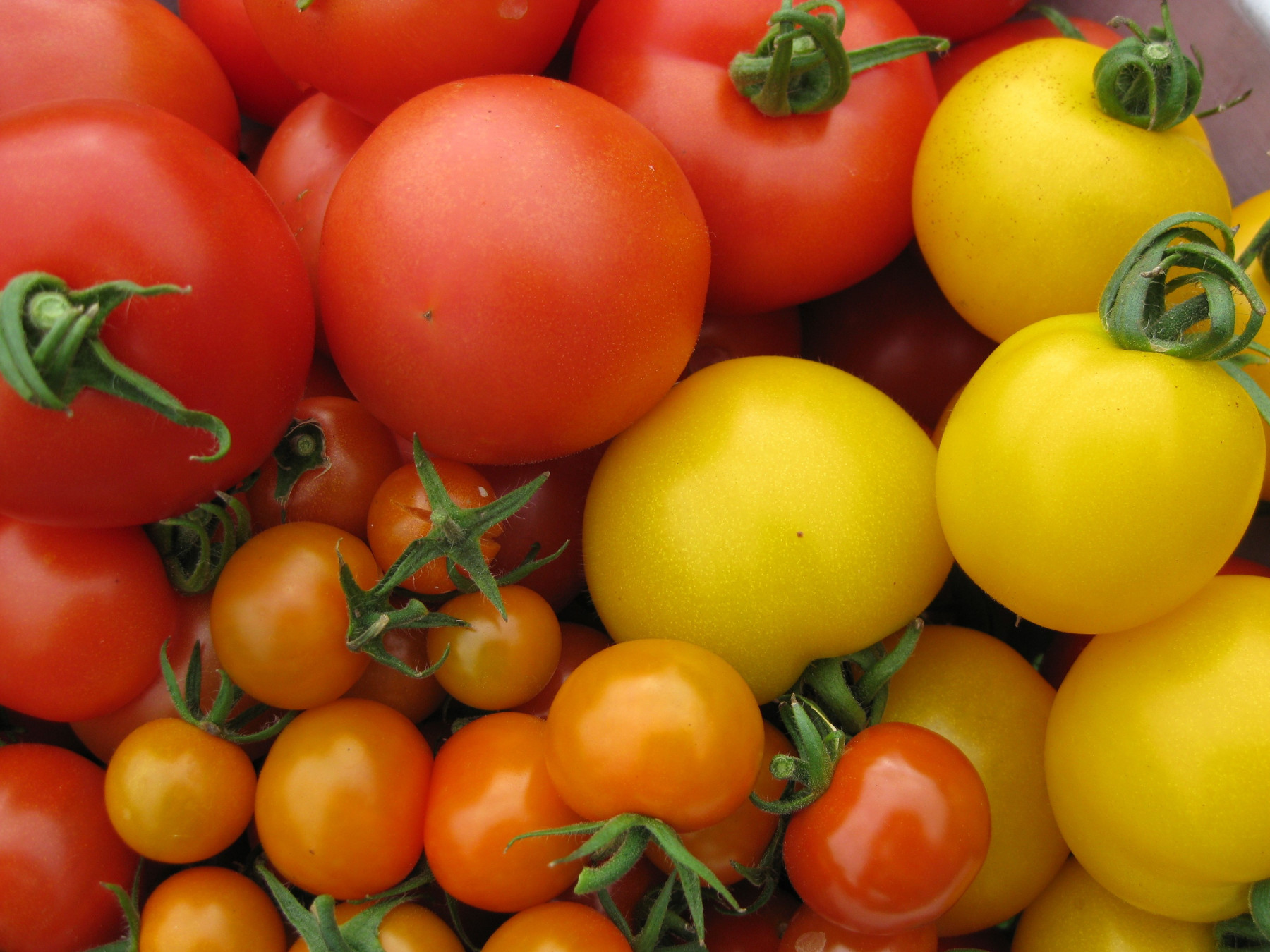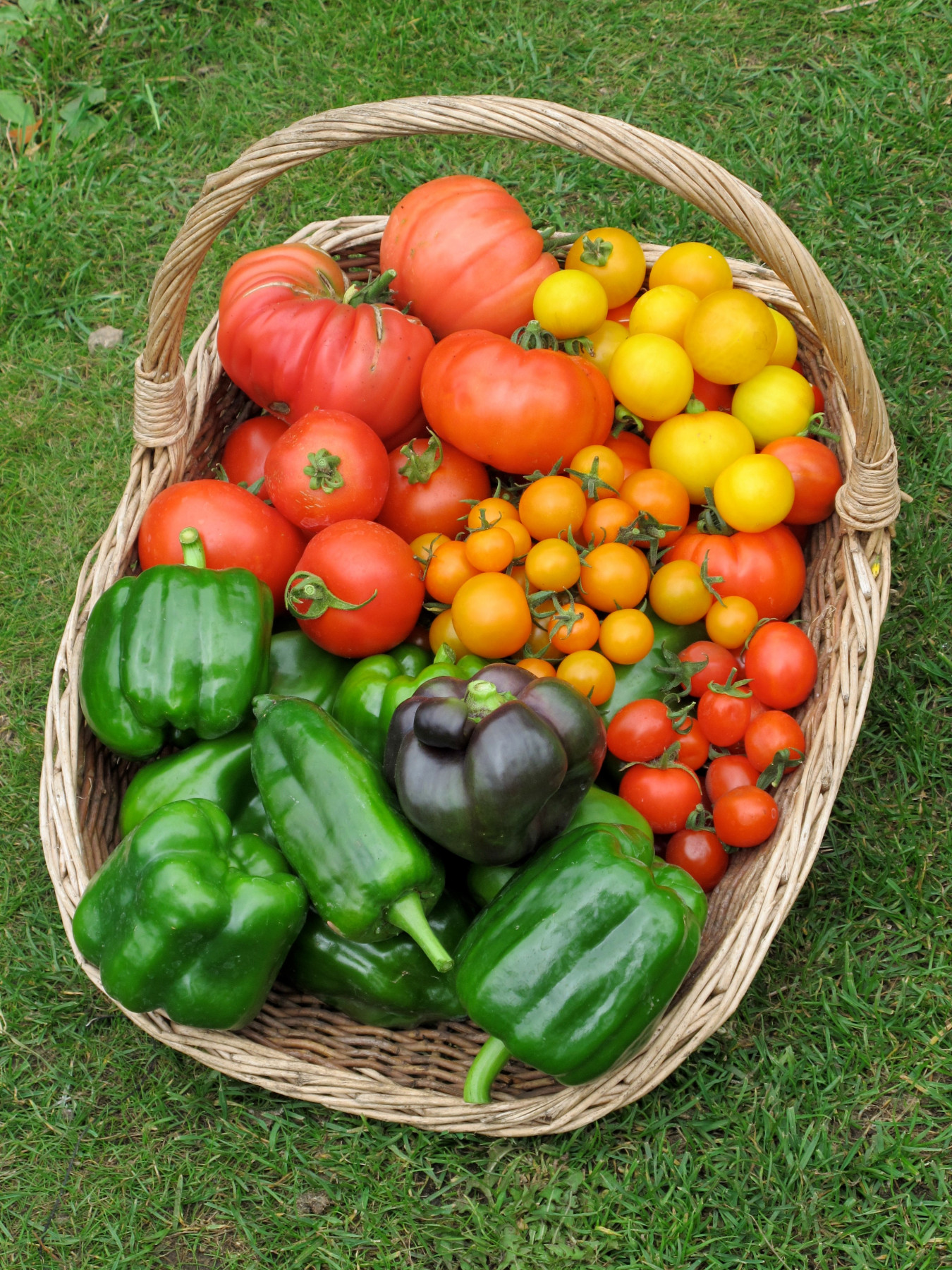
There’s only one thing I’d like more than my Hartley greenhouse – and that’s another one! And this year my need has been even greater following a dry winter and cool spring – for nothing has grown quite as well as it should. We’re approaching summer, but I still have a traffic jam worthy of the M25. My daffodil and tulip tubs by the front door have only just finished flowering, because they arrived so late, so I can’t put my galvanised summer containers of pelargoniums and plectranthus out until the spring bulbs have gone.
That’s why the summer containers are still languishing in my Hartley greenhouse, although not very happy or ‘plumptious’ due to the cool April nights. The potfuls of tomatoes (and we grow at least ten varieties here) should be where the pelargoniums are, but they’re still in the wooden greenhouse – which is too shady for them. The dahlias are still in there too, because most still haven’t made enough growth for them to go up onto the allotment. And so on and so on!
When I got my Hartley greenhouse, some ten years ago now, I imagined a pretty collection of potted plants on the benches. However, as I have said before, the Best Beloved got there first and it became a productive greenhouse rather than an ornamental one. I may not have pretty, but I do have an abundant supply of vitamin-rich, tasty tomatoes, peppers, aubergines, cucumbers, basil and tarragon. They soon won me over and, with the cost of food rising as fast as Party-gate fines, I’m all for growing my own in very possible space. Pretty has been replaced by prudent.
It’s really worth growing your own tomatoes, for the sun-warmed home-grown tomato is a completely different beast from the supermarket alternative. My favourite salad tomato is ‘Akron’, an F1 hybrid that was awarded an AGM (or award of garden merit) by the RHS vegetable panel. It crops well and the medium-sized, round red tomatoes have a good flavour that’s not too sweet. Cherry tomatoes are a great favourite with the children in our family. ‘Sungold’ has sweet-but-tangy orange fruits and we prefer their flavour to ‘Gardener’s Delight’ – although this red cherry tomato is equally good. A couple of plants of either of these cherries will provide a lot of tomatoes over a long period.

We freeze bags of tomato passata, using a red Rigamonti machine that resembles a meat mincer. (from Seeds of Italy) Home-made passata is fabulous added to casseroles and pasta dishes, but you need large fleshy beefsteak tomatoes, such as ‘Big Daddy’ or ‘Marmande’, because they’re virtually pip-free. They make great passata, but they’re bland eaten fresh. Needless to say, the Best Beloved makes lots of passata and it’s quite possible to go up to the greenhouse and not find one ripe tomato left for your lunch. They’ve all been mangled and pulped. Thoughts of sabotage enter my mind, because the passata machine has lots of springs and cogs. The odd one could go missing, perhaps.
Cooked tomatoes are better for you than raw ones, especially if olive oil is used to cook them, because the process makes the bright red carotenoid lycopene more available to our bodies. It’s a powerful antioxidant and is said to prevent cancer. If you have room, growing some fleshy beefsteak tomatoes is good for your health. Each individual tomato is large in size, so there aren’t so many of them per truss.
Tomatoes are bred from South American species and plants from this region have evolved in high altitude areas close to the equator. Days and nights are warm, rather than hot, and evenly balanced when it comes to night and day length. These South American beauties tend to do best in the UK as nights begin to draw in a bit – and that goes for dahlias, fuchsias, runner beans and salvias. Scorching temperatures don’t suit them well, so keep the greenhouse ventilated when growing tomatoes.
Feed them well, by watering on liquid tomato food every other week, and try to water your plants in the morning. It promotes better growth. We use large pots full of compost for our tomatoes, because they’re prone to soil-based diseases. Grafted tomato plants are disease resistant and vigorous, so I believe the extra expense is justified. Most tomatoes can be affected by tomato blight and we keep them away from our potato crop, although I’m not sure if they’re different blights or not. They certainly appear at the same time.
Peppers are equally useful to freeze or eat fresh, but I only grow sweet peppers because chillies are too fiery from my palate. You can keep chilli plants going all year round, but sweet peppers produce a summer crop and then fade. My ultimate sweet pepper favourite is ‘Long Red Marconi’, because it produces slender sweet peppers that don’t gather heat as they ripen. The similar-looking ‘Hungarian Hot Wax’ is a fiery beast once it reddens – but it’s horses for courses. Some like it hot.
Blockier, thick-skinned sweet peppers that ripen from green to red include ‘New Ace F1’ and the more compact ‘Redskin’. ‘Ariane F1’ ripens to orange. All have been awarded an AGM. F1 seeds are worth the extra outlay: they have added vigour at every stage – including germination. Sweet peppers prefer warmth, rather than extreme heat, and we grow ours in a south-facing cold frame. They don’t do as well in dull, cool summers – but then none of us do!

Aubergines are the third crop we try to grow and it’s always feast or famine with them. I’ve found the best variety here, in the cool Cotswolds, is ‘Moneymaker F1’. This prolific aubergine produces lots of larger, glossy dark fruits which are easier to cook than lots of smaller ones. I took against this aubergine variety, because it shares its name with a particularly unpleasant tomato variety that has all the charm of a soggy tennis ball. However, the Moneymaker aubergine is excellent and it will crop outdoors in warmer parts of England, although Spring Cottage isn’t known for its warmth.
Raising your own tomatoes, peppers and aubergine plants from seed is an easy option, if you invest in an electric propagator such as the Vitapod. This will allow you to grow the varieties you want to eat, rather than the cold-shocked offerings from garden centres. The £150 outlay for the propagator might seem hefty, but you’ll soon cancel that out because pepper, tomato and aubergine plants are expensive items. Mine has already paid for itself several times over.
You will also be able to sow and grow greenhouse cucumbers, which crop on almost daily basis when happy. One plant could give between 50 and a hundred. The foot-long fruits have a distinctly nutty flavour that’s entirely missing in over-irrigated, cling-filmed ones. You can use them in pittas, along with feta, mint and lemon, or add them to tuna sandwiches. We also eat cucumber sandwiches, with marmite or without, although we don’t cock our little fingers up in the air. Good varieties for the greenhouse include ‘Carmen F1’ and ‘Tiffany F1’. Find them a cool spot away from midday sun and breezy draughts.
Add in the basil, which you can plant close to the tomatoes and find a sunny spot for French tarragon, Artemisia dracunculus var. sativa. It will overwinter in greenhouses and it’s easily dried in a low oven, for storing in jars. The nutty flavour is particularly good with chicken. Make sure it’s French tarragon though: the others are less flavourful.
Of course, there’s no room for any decorative like a pelargonium, but I’m eating healthy food without breaking the bank!



